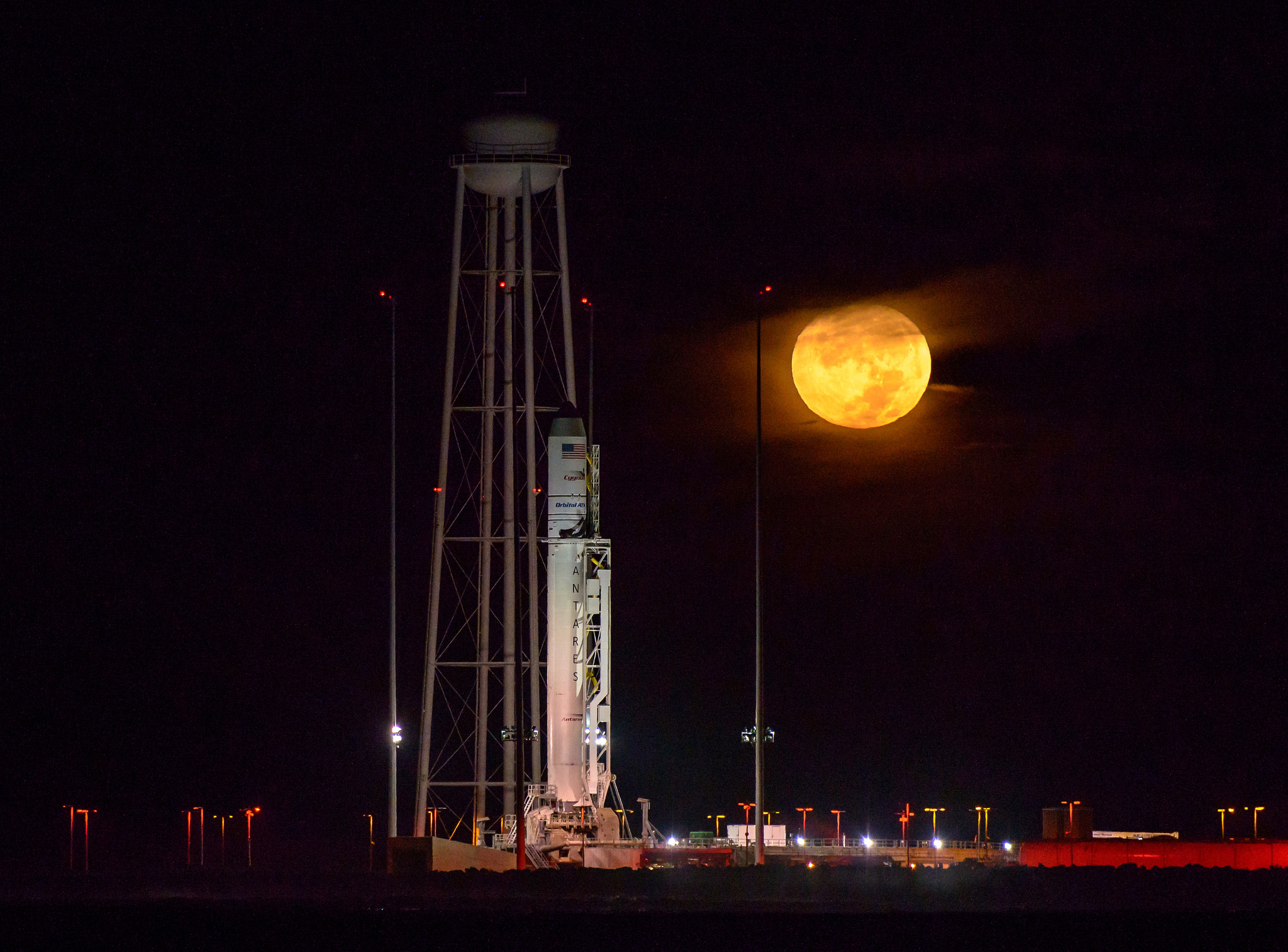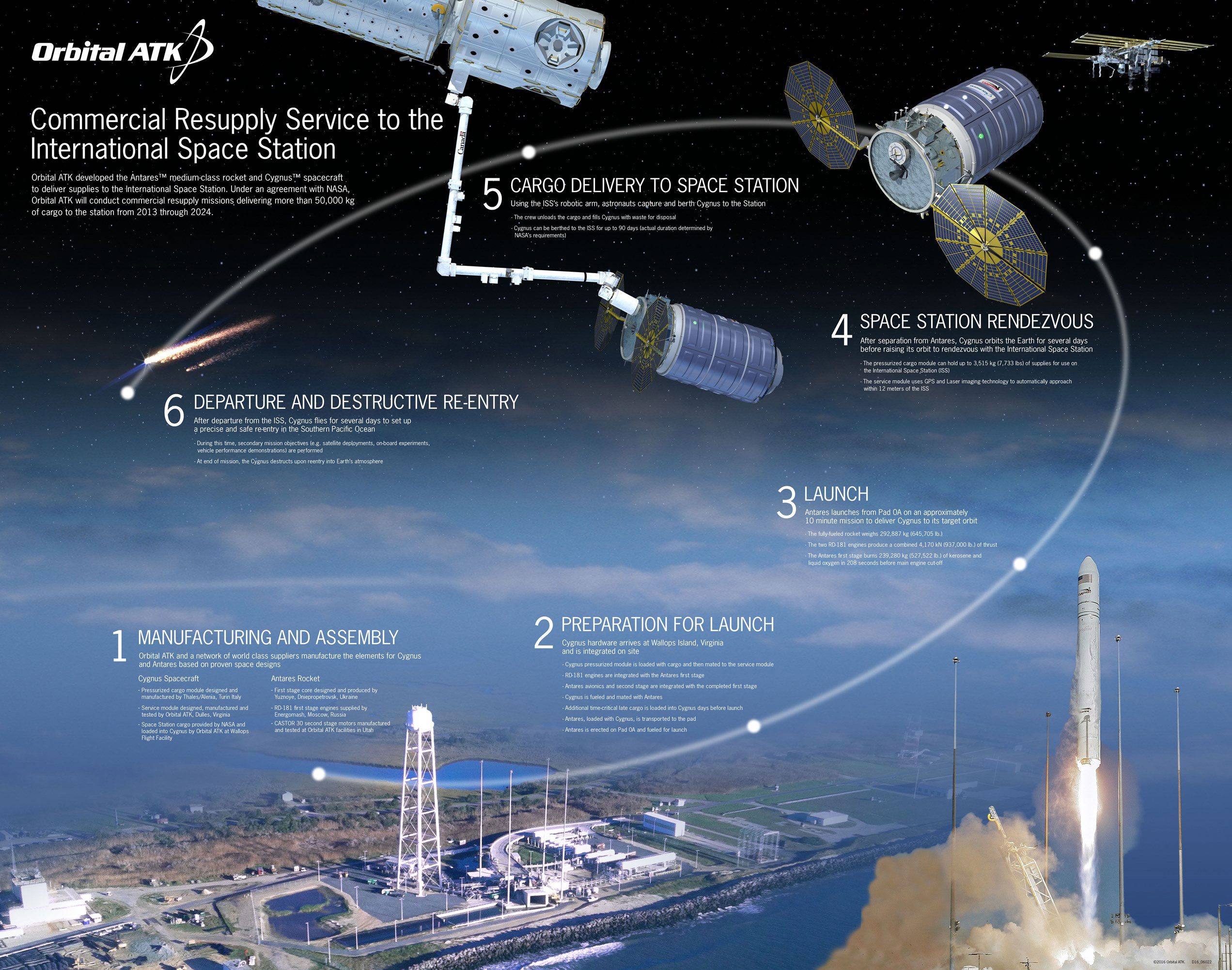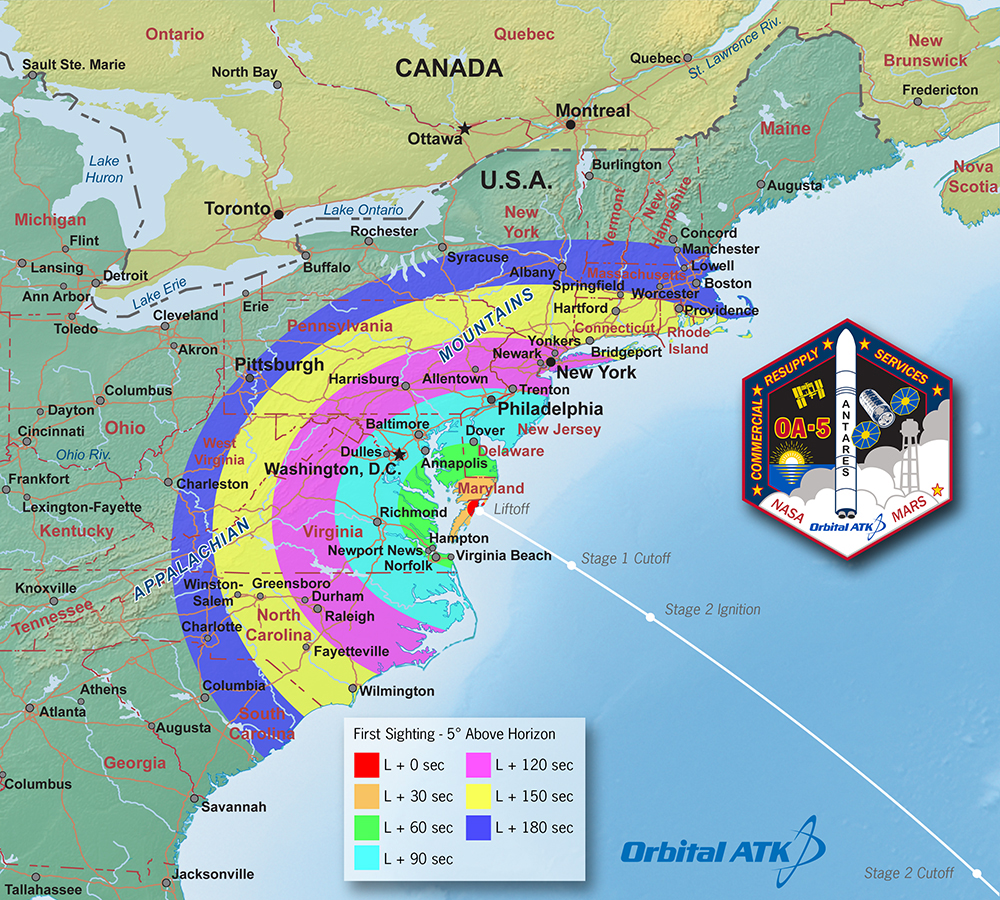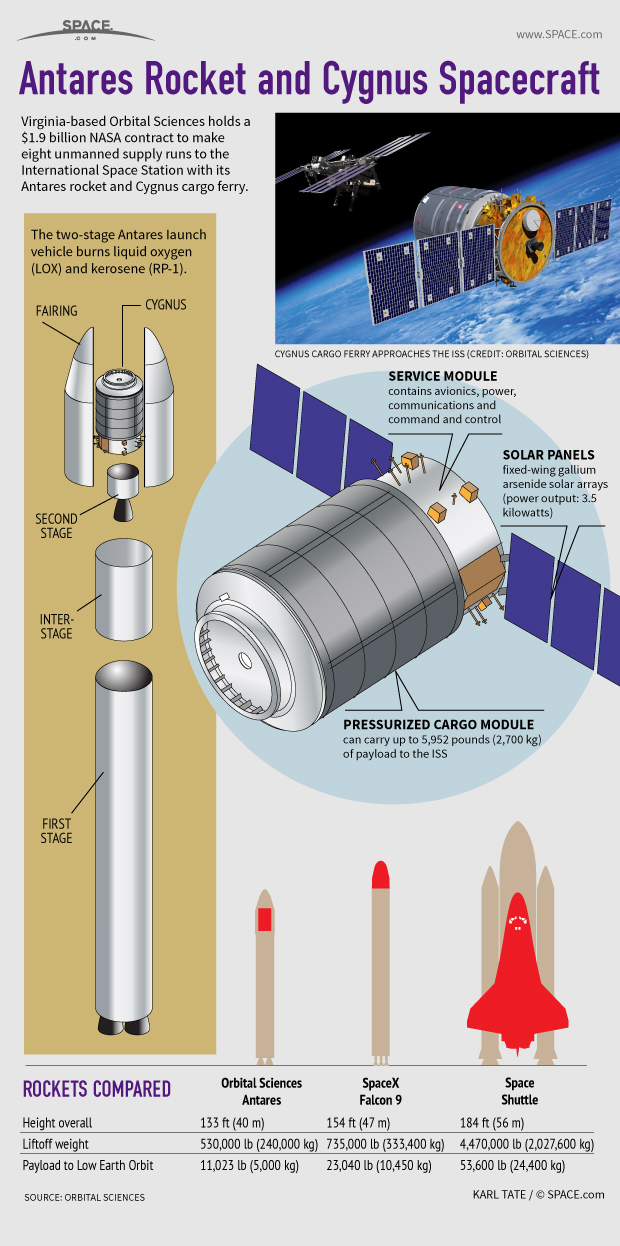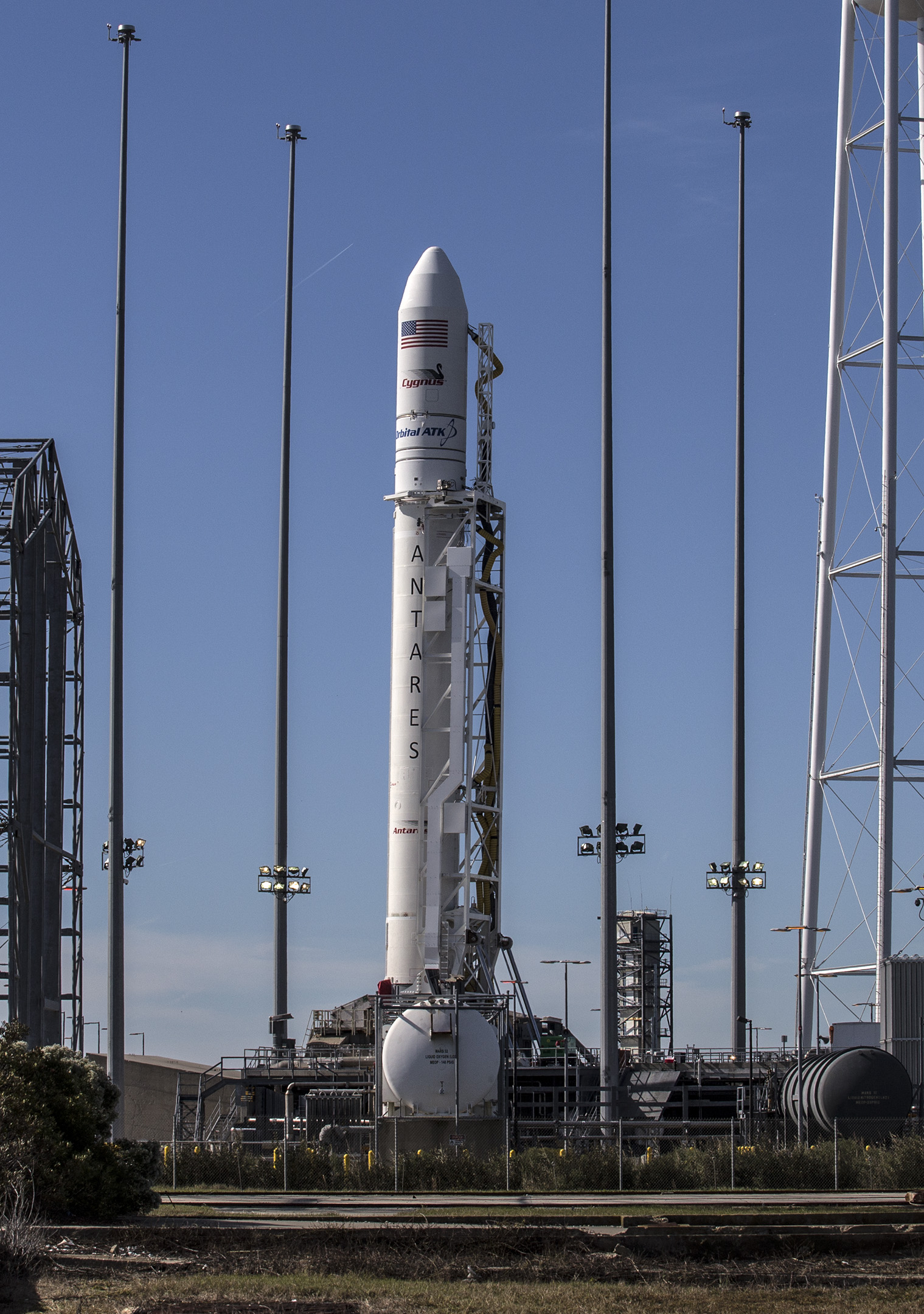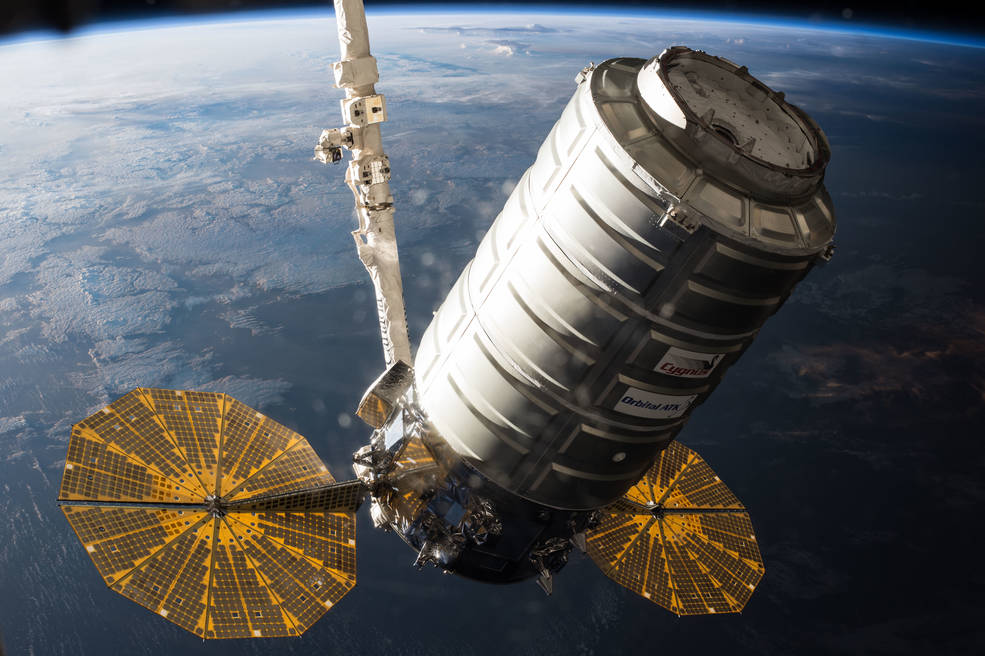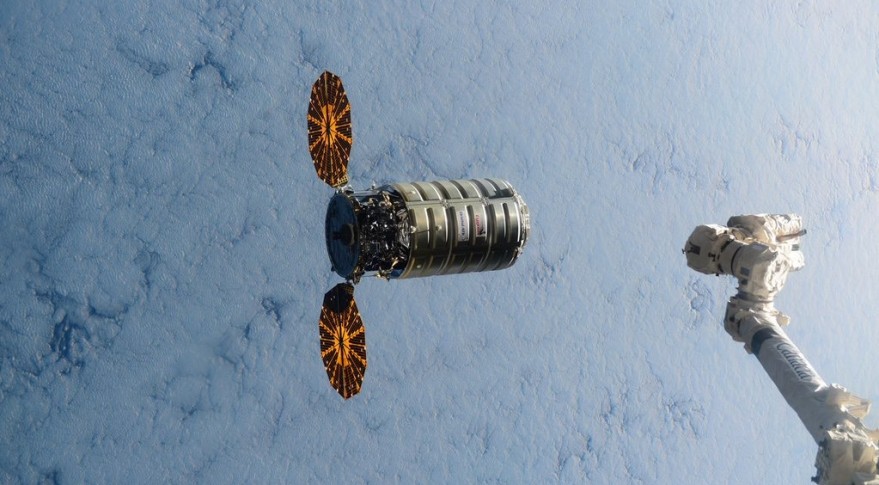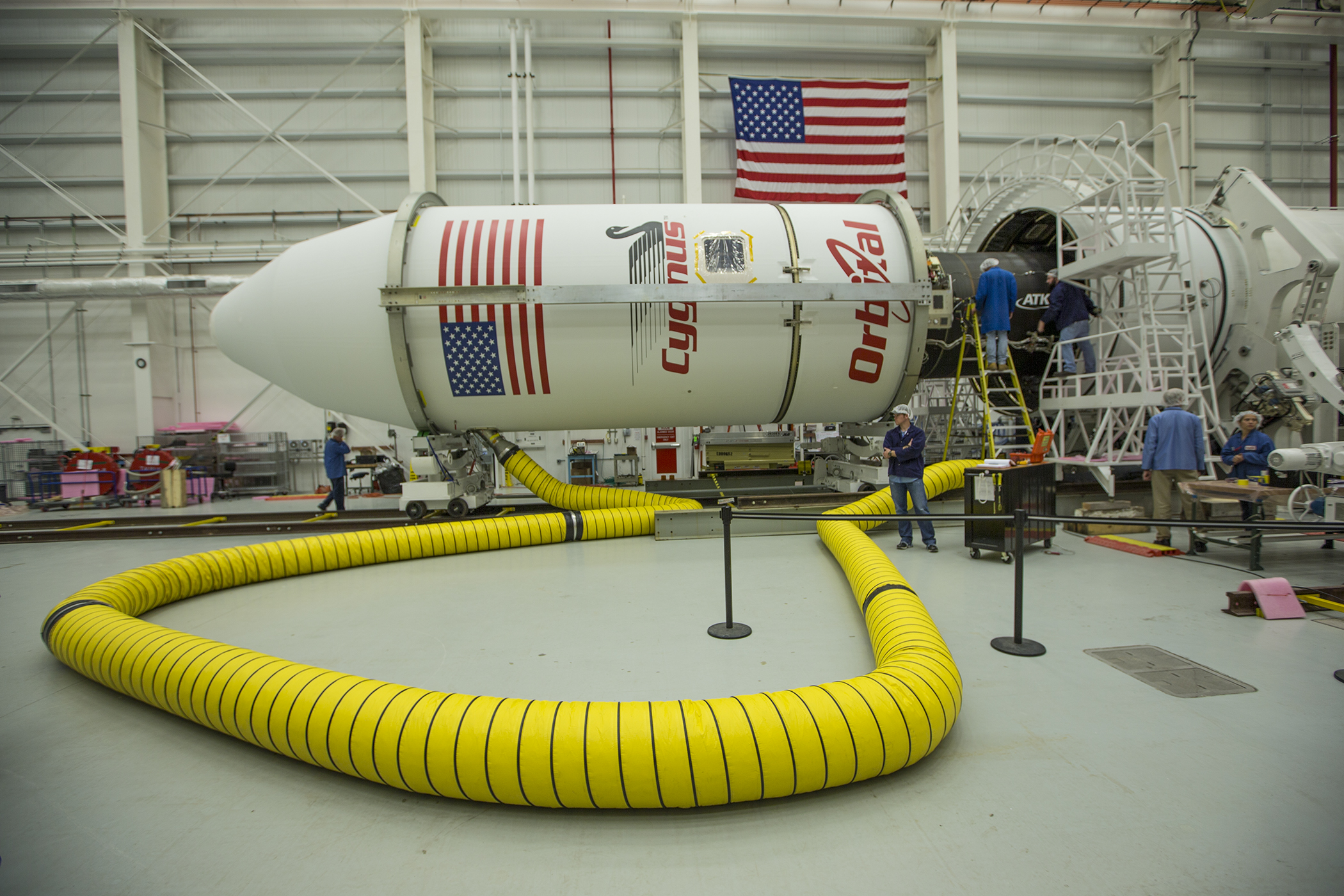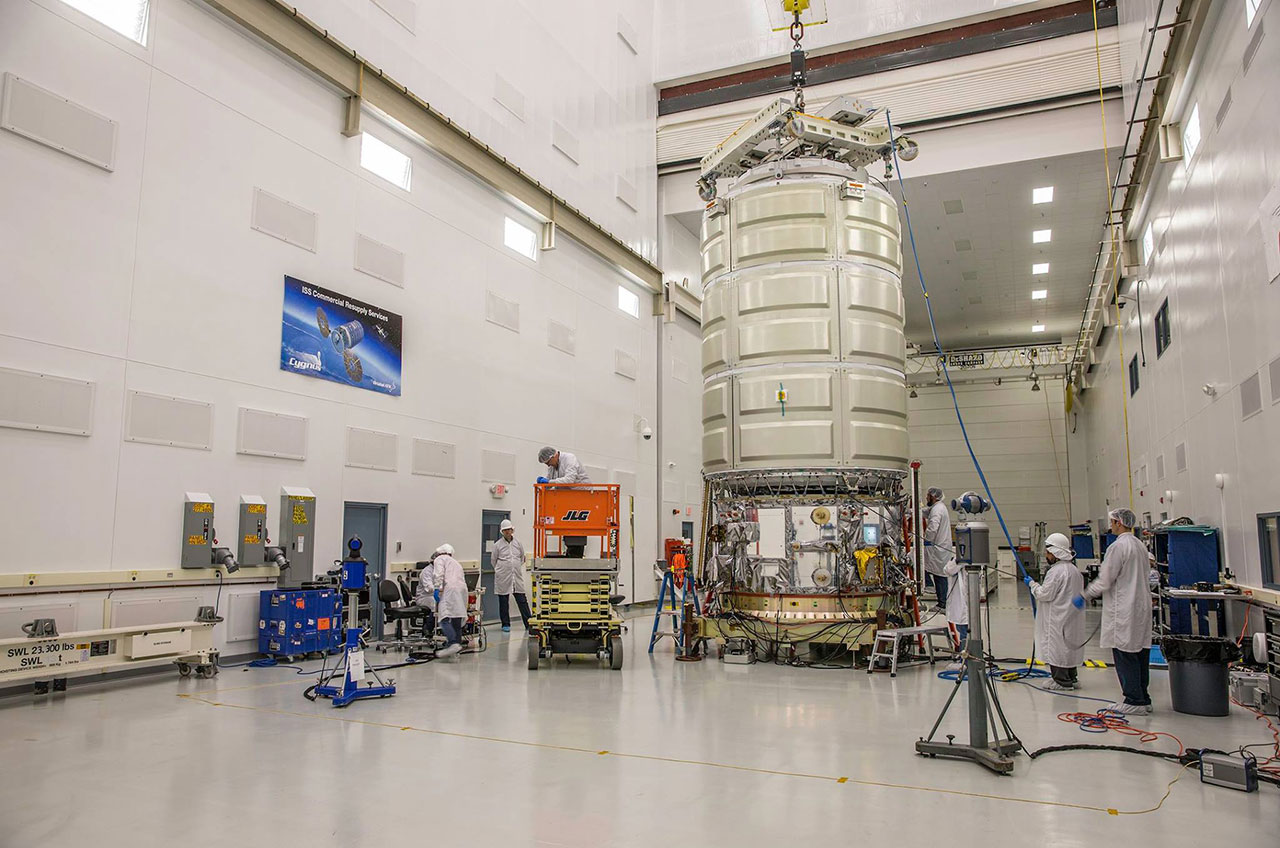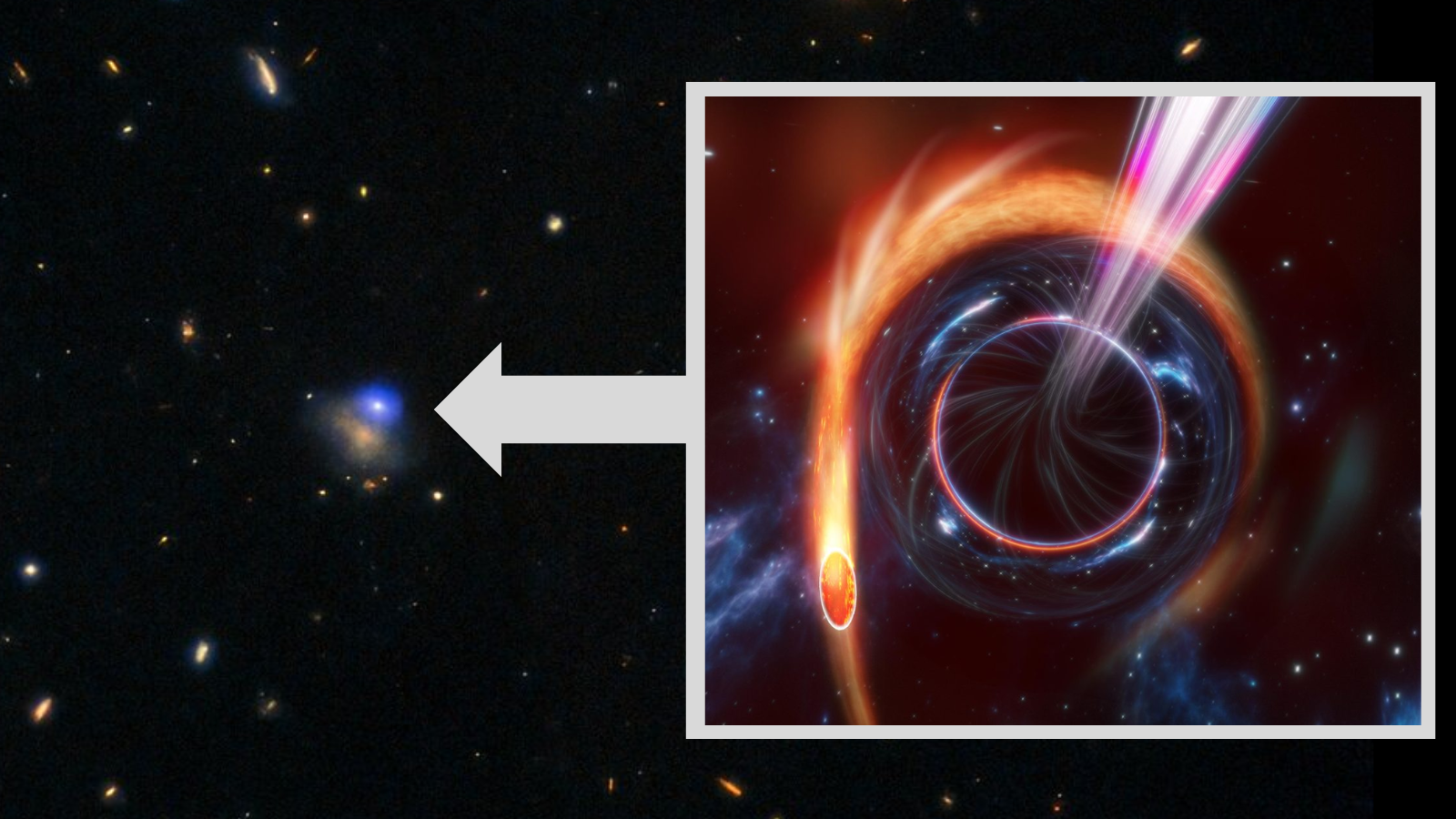Launch Photos: Orbital ATK's Upgraded Antares Rocket Returns to Flight
'Supermoon' sets behind Antares
A nearly-full supermoon sets behind Orbital ATK's Antares rocket in this photo of the launchpad at NASA's Wallops Flight Facility in Virginia. The photo was taken before dawn on Saturday (Oct. 15), about 24 hours before the full moon's peak.
OA-5 Mission Diagram
This diagram explains every step of Orbital ATK's cargo resupply mission to the International Space Station.
Visible along the East Coast
This map shows the regions of visibility for Orbital ATK's Antares rocket nighttime launch scheduled for 8:03 p.m. EDT on Sunday, Oct. 16, 2016 from Wallops Island, Virginia. The launch may be visible from a wide region of the U.S. East Coast. Color bands denote the time after launch (in seconds) the rocket's plume may be visible.
Private Antares Rocket & Cygnus Spacecraft Explained (Infographic)
How Orbital Sciences' Antares rocket and Cygnus spacecraft service the space station. See how Orbital's Cygnus spacecraft and Antares rockets works in this infographic.
Ready for launch
Orbital ATK's Antares rocket was erected onto the launchpad at NASA's Wallops Flight Facility in Virginia on Oct. 14, two days before its scheduled launch.
Carrying cargo to the ISS
Once in orbit, Orbital ATK's robotic Cygnus cargo spacecraft separates from the Antares rocket to meet up with the International Space Station. A Cygnus spacecraft from the last cargo resupply mission is pictured here arriving at the ISS on March 26, 2016.
ISS' robotic arm reaches for cargo flight
The International Space Station's robotic arm will grapple the Cygnus cargo spacecraft as it arrives at the station.
Breaking space news, the latest updates on rocket launches, skywatching events and more!
Preparing the Cygnus spacecraft
The Cygnus spacecraft was prepared for launch at NASA's Wallops Flight Facility in Virginia.
S.S. Alan Pindexter
The Orbital ATK Cygnus spacecraft for OA-5 is named after former astronaut and Naval Aviator Captain Alan Poindexter. In this photo, the spacecraft is being prepared for the mission at NASA's Wallops Flight Facility in Virginia.
Cygnus arrives at Wallops
Orbital ATK's Cygnus spacecraft arrives at the Horizontal Integration Facility at NASA's Wallops Flight Facility on Oct. 2 to join the Antares rocket.

Hanneke Weitering is a multimedia journalist in the Pacific Northwest reporting on the future of aviation at FutureFlight.aero and Aviation International News and was previously the Editor for Spaceflight and Astronomy news here at Space.com. As an editor with over 10 years of experience in science journalism she has previously written for Scholastic Classroom Magazines, MedPage Today and The Joint Institute for Computational Sciences at Oak Ridge National Laboratory. After studying physics at the University of Tennessee in her hometown of Knoxville, she earned her graduate degree in Science, Health and Environmental Reporting (SHERP) from New York University. Hanneke joined the Space.com team in 2016 as a staff writer and producer, covering topics including spaceflight and astronomy. She currently lives in Seattle, home of the Space Needle, with her cat and two snakes. In her spare time, Hanneke enjoys exploring the Rocky Mountains, basking in nature and looking for dark skies to gaze at the cosmos.
